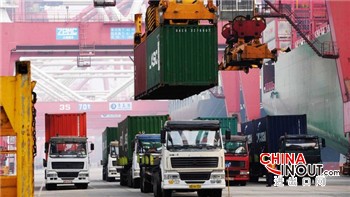中國(guó)將在周二發(fā)布2015年第四季度的國(guó)內(nèi)生產(chǎn)總值(GDP)數(shù)字,,當(dāng)前各方越來(lái)越擔(dān)心中國(guó)經(jīng)濟(jì)的健康狀況,這進(jìn)而在全球市場(chǎng)引發(fā)沖擊波,。
官方數(shù)據(jù)顯示,,中國(guó)經(jīng)濟(jì)在2015年前三季度實(shí)際增長(zhǎng)6.9%。這與政府“7%左右”的全年目標(biāo)吻合,,但將是自1990年以來(lái)最慢的全年增長(zhǎng),。以下是周二數(shù)字中的五個(gè)看點(diǎn):
名義增長(zhǎng)。圍繞中國(guó)的“GDP平減指數(shù)”(對(duì)名義GDP進(jìn)行通脹調(diào)整,,得出政治上敏感的實(shí)際GDP增長(zhǎng)率),,人們抱有種種疑慮。GDP平減指數(shù)應(yīng)該是最廣義的通脹指標(biāo),,涵蓋所有商品和服務(wù)(包括非消費(fèi)品)的價(jià)格變化,。但是,如果第四季度的平減指數(shù)大幅偏離人們比較熟悉的中國(guó)通脹指標(biāo),,投資者將懷疑中國(guó)國(guó)家統(tǒng)計(jì)局在數(shù)據(jù)上做手腳,,因而把名義增長(zhǎng)率視為反映經(jīng)濟(jì)狀況的更可靠指標(biāo)。
“其他”服務(wù),。隨著制造業(yè)和建筑業(yè)等傳統(tǒng)增長(zhǎng)引擎失去動(dòng)力,,服務(wù)業(yè)目前是中國(guó)經(jīng)濟(jì)增長(zhǎng)的主要驅(qū)動(dòng)因素。2015年第三季度,,被稱(chēng)為“其他”服務(wù)的一個(gè)大類(lèi)(包括醫(yī)療,、教育、法律,、會(huì)計(jì)等等)提振了中國(guó)強(qiáng)勁得出人意料的整體增長(zhǎng)數(shù)據(jù),。
然而,許多人懷疑這些數(shù)字,,理由是缺乏具體細(xì)節(jié),、衡量服務(wù)價(jià)值的固有挑戰(zhàn),以及對(duì)于中國(guó)統(tǒng)計(jì)人員捏造數(shù)據(jù)以達(dá)到預(yù)定目標(biāo)的疑心。如果政府提供關(guān)于哪些服務(wù)增長(zhǎng)最快的更多細(xì)節(jié),,它可能化解疑慮,。不然的話,外界的疑心將會(huì)加重,。
金融服務(wù),。除了“其他”服務(wù)外,金融服務(wù)在2015年前三個(gè)季度對(duì)中國(guó)的總體增長(zhǎng)做出重大貢獻(xiàn),,因?yàn)槿ツ晟习肽甑膰?guó)內(nèi)股票牛市推動(dòng)了交易傭金和其他券商服務(wù),。然而,基數(shù)效應(yīng)將在第四季度顯現(xiàn),,因?yàn)檫@一輪牛市是從2014年11月前后開(kāi)始的,。
此外,2015年上半年股市大漲大跌期間急劇擴(kuò)大的交易量,,到了第四季度的回升期間下降了很多,。如果數(shù)據(jù)顯示金融服務(wù)再次對(duì)增長(zhǎng)做出強(qiáng)勁貢獻(xiàn),那將加劇人們對(duì)中國(guó)經(jīng)濟(jì)數(shù)據(jù)的懷疑,。
工業(yè)產(chǎn)出,。除季度GDP數(shù)據(jù)外,國(guó)家統(tǒng)計(jì)局還將在周二發(fā)布月度工業(yè)產(chǎn)出數(shù)據(jù),。12月的工廠調(diào)查顯示,,中國(guó)苦苦掙扎的制造業(yè)在2015年大部分時(shí)間內(nèi)下滑之后,可能已終于觸底,。工業(yè)產(chǎn)出在10月降至近七年低點(diǎn)后,,在11月強(qiáng)勁提速。如果12月繼續(xù)加速,,那可能是一個(gè)表明中國(guó)的工廠已挺過(guò)最糟糕時(shí)期的跡象,。
凈出口。2008至2014年期間,,凈出口對(duì)全年GDP增長(zhǎng)的貢獻(xiàn)為零或負(fù)值,突顯有關(guān)中國(guó)“出口導(dǎo)向型”經(jīng)濟(jì)的傳統(tǒng)看法并不準(zhǔn)確,。但海關(guān)數(shù)據(jù)顯示,,2015年期間,隨著大宗商品價(jià)格暴跌降低了中國(guó)的進(jìn)口賬單,,中國(guó)的商品貿(mào)易順差飆升至5950億美元的創(chuàng)紀(jì)錄高位,。不過(guò),海關(guān)數(shù)據(jù)并不包括服務(wù)貿(mào)易,,因此GDP數(shù)字將揭示凈出口在多大程度上緩沖了國(guó)內(nèi)經(jīng)濟(jì)放緩,。

China will release gross domestic product figures for the fourth quarter of 2015 on Tuesday amid rising concern about the health of the country’s economy — which in turn has reverberated through global markets.
China’s economy grew 6.9 per cent in real terms in the first three quarters, official data show. That is in line with the government’s full-year target of “around 7 per cent” but would be the slowest full-year growth since 1990. Here are five things to look for in Tuesday’s numbers:
Nominal growth. Suspicion surrounds China’s “GDP deflator”, the inflation gauge used to convert nominal GDP into the politically sensitive real GDP growth rate. The GDP deflator should be the broadest measures of inflation, capturing price changes for all goods and services, including non-consumption goods. But if the fourth-quarter deflator diverges sharply from more familiar gauges of Chinese inflation, investors will suspect that China’s stats bureau is cooking the books and look to nominal growth as a more reliable indicator of the state of the economy.
‘Other’ services. As traditional growth engines such as manufacturing and construction wane, services are now the main drivers of China’s growth. In the third quarter, a broad category called “other” services — which includes healthcare, education, law, and accounting among others — boosted China’s unexpectedly strong headline growth figure.
Yet many are sceptical about these figures due to the lack of specifics, the inherent challenges of measuring the value of services, and suspicions that China’s statisticians fudge the data to meet predetermined targets. If the government provides more detail about which services are growing fastest, it could allay the scepticism. If not, doubts will grow.
Financial services. In addition to “other” services, financial services were a major contributor to overall growth through the first three quarters as China’s stock market boom early in the year drove trading commissions and other brokerage services. In the fourth quarter, base effects will start to kick in, however, as the stock market boom began around November 2014.
Moreover, the trading volumes that ramped up during the first half of the year’s rally and bust were far more muted during the fourth quarter recovery. Another strong growth contribution from financial services will fuel more data scepticism.
Industrial production. The statistics bureau will release monthly industrial output data alongside the quarterly GDP figures on Tuesday. Factory surveys for December indicated that China’s struggling manufacturing sector may have finally bottomed out after declining for most of 2015. Industrial production accelerated strongly in November after hitting a near seven-year low in October. If the acceleration continued in December, it may be a sign that the worst is over for China’s factories
Net exports. The contribution to annual GDP growth from net exports was zero or negative from 2008 to 2014, undermining the conventional wisdom about China’s “export-led” economy. But China’s merchandise trade surplus surged to a record of $595bn in 2015 as tumbling commodity prices lowered the country’s import bill, customs data show. Customs figures do not include services trade, however, so the GDP figures will reveal how much net exports cushioned the slowdown in the domestic economy.











